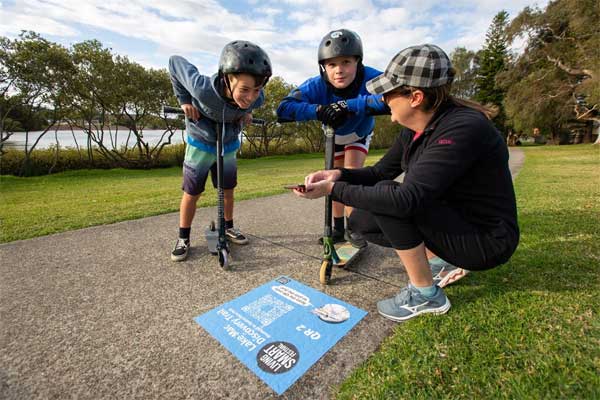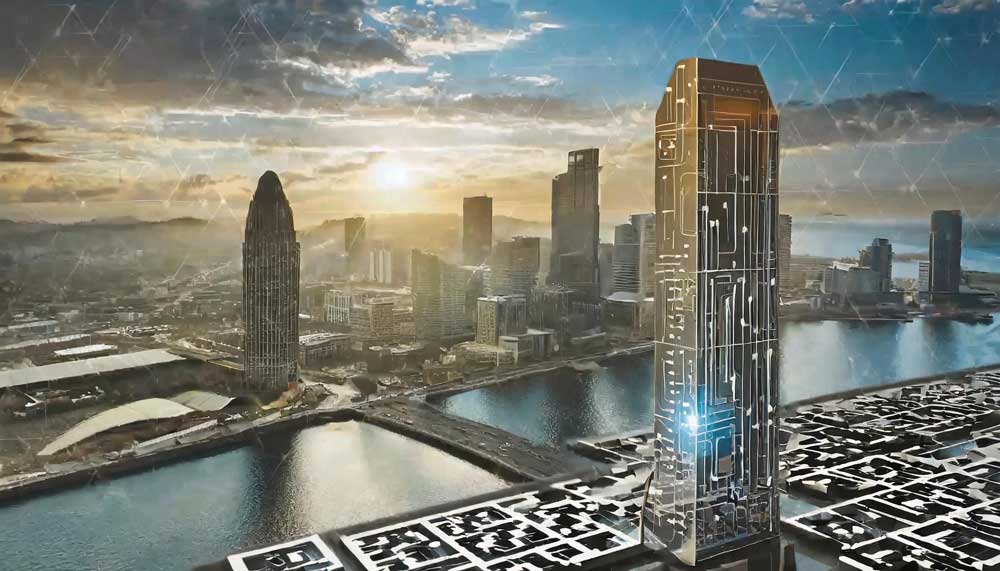In the wake of the pandemic, QR Codes for governments including local, state, and federal governments around the world have been exploring innovative ways to streamline their operations and deliver services efficiently.
One technology that has gained significant traction in recent times is the dynamic QR Code. These codes, in conjunction with advanced mobile applications, have the potential to revolutionize how governments interact with their citizens in a post-pandemic world.
QR codes have been around for quite some time, but their applications have taken on a new significance in a post-pandemic world. These QR Codes for governments can be quickly scanned by smartphones, providing a wealth of information with just a few taps.
QR Codes for governments can also be used in Tafes, Colleges and and universities to provide information on room use etc. Boxhill Tafe used our system to provide timetables and all sorts of information on a QR Code engraved on a plate and positioned above the door. This not only helps students but teachers with technology, cleaners and security. No more bits of paper etc plastered all over the door.
QR Codes For Government Parks and Buildings
Imagine a world where these QR Codes for governments are strategically placed in parks, public spaces, and government buildings, offering valuable insights and resources to citizens.
Let’s take a stroll through a park and see how dynamic QR codes can revolutionize our interaction with local government. As we approach the entrance, we notice a QR code displayed prominently on a sign.

Curiosity piqued, we take out our smartphones, open a QR Code scanner app, and capture the code. Instantly, a new world of possibilities unfurls before our eyes.
The dynamic QR Codes for governments takes us to a webpage dedicated to the park.
Here, we find information about upcoming events, guidelines for visitors, and even a map of the park. We’re thrilled to discover that we can also report any park-related issues, such as broken benches or litter, directly through the webpage.
Our feedback matters, and the local government is responsive to our needs.
Moving forward, we stumble upon an informational sign about a local historical site within the park.
A dynamic QR Codes for governments is embedded within the sign, and we can’t resist scanning it. Suddenly, a virtual tour of the site appears on our phones, complete with historical anecdotes and immersive videos.
We delve deeper into our community’s rich history and appreciate the efforts taken by the local government to preserve it.
Further exploring, we come across a statue commemorating a significant event in our town’s history.
This time, the dynamic QR Codes for governments leads us to a webpage with stories from those who were directly involved in the event. We find accounts from survivors, family members, and even government officials who played a role in its aftermath.
This insight into our shared past fosters a sense of unity and pride in our local community.
It’s not just parks where dynamic QR codes can make a difference. State and federal government buildings can also benefit from their use.
For example, imagine walking through the doors of your state capitol and spotting QR Codes for governments placed strategically around the building. Upon scanning one, you’re directed to a webpage with profiles of elected officials and their responsibilities.
Informed citizens are empowered citizens, and these profiles help us better understand and engage with our government.
Similarly, federal government buildings could utilize dynamic QR Codes for governments to streamline various processes. Need information about filing your taxes?
Just scan a code, and everything you need to know is at your fingertips. Interested in learning about grant opportunities? Scanning a QR code can provide the resources and application details within seconds.
The potential uses for dynamic QR codes in a post-pandemic world are endless. They can be employed in libraries to access e-books and online resources, in museums to provide an interactive tour experience, and even in voting booths to ensure a secure and efficient voting process. The possibilities are limited only by our imagination.
The beauty of dynamic QR Codes for governments is they can be updated at any time and provide statistics.
QR codes have been around for quite some time now and are widely used in various industries. However, the pandemic has highlighted their usefulness and adaptability in the government sector.
These codes are excellent tools for transmitting information quickly and securely, making them ideal for local, state, and federal governments.
With dynamic QR Codes for governments they can provide a wealth of information about various tasks and services. For example, QR Codes for governments can be placed at strategic locations, offering citizens instant access to maps, upcoming events, rules and regulations, and even emergency contact numbers.
The versatility of dynamic QR Codes for governments extends beyond parks. Governments can utilize these codes for a wide range of purposes. For instance, at the state level, dynamic QR Codes for governments can be used for public transportation.
Passengers can scan a code at bus stops or train stations to access real-time updates on schedules, delays, and routes. Additionally, the codes can be linked to payment systems, allowing passengers to pay for their fare using a mobile application, eliminating the need for physical cash or tickets.
At a federal level, dynamic QR Codes for governments present opportunities for improved public health and safety measures. Government agencies can use these codes on official COVID-19 vaccination certificates or test results.
By scanning the code, employers, businesses, or travel authorities can verify the authenticity of the document, ensuring the safety of all parties involved.
This technology can help prevent the spread of infectious diseases while allowing individuals to resume their daily activities confidently.
Furthermore, dynamic QR Codes for governments can enhance government transparency and enable efficient data collection.
By incorporating these codes into surveys or questionnaires, governments can gather valuable feedback from citizens. This data can then be analyzed to make informed policy decisions and improve overall governance.
Additionally, the QR Codes for governments can be linked to online portals, enabling citizens to access essential government services or complete administrative tasks conveniently.
In conclusion, the potential uses of dynamic QR codes in a post-pandemic world for local, state, and federal governments are vast. From parks to public transportation, these codes can provide citizens with easy access to information, streamline processes, and ensure public safety.
By harnessing the power of this technology, governments can create a more connected, transparent, and efficient system that caters to the needs of their citizens effectively. As we navigate the challenges brought upon by the pandemic, embracing dynamic QR codes will undoubtedly contribute to the advancement of governance in the modern era.

